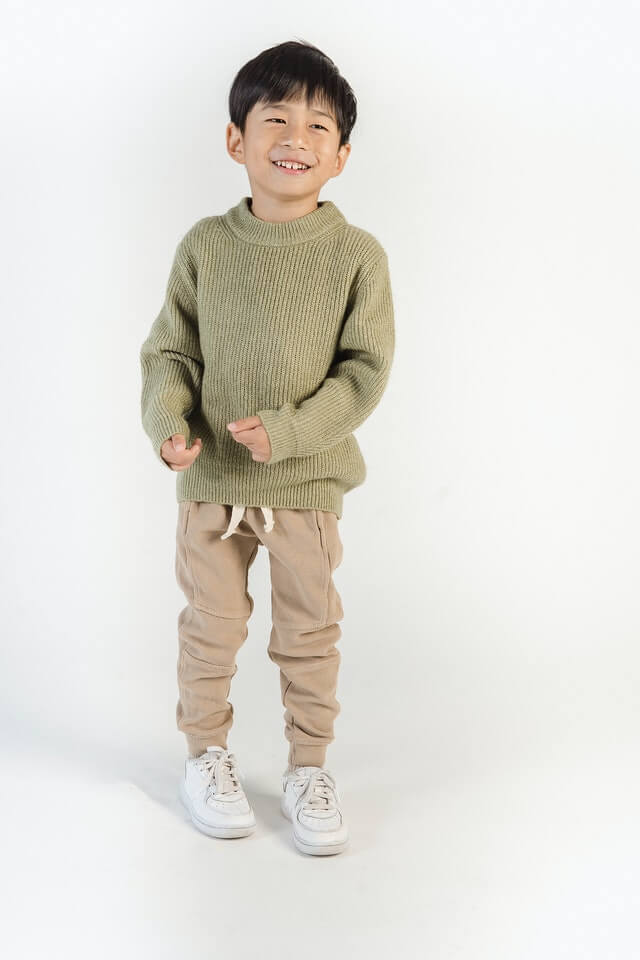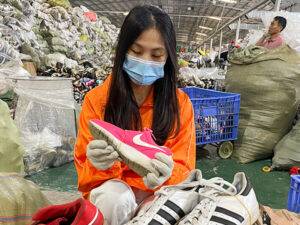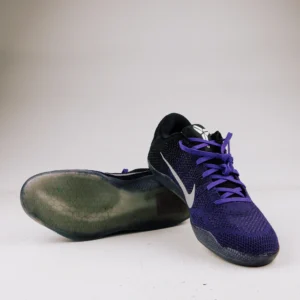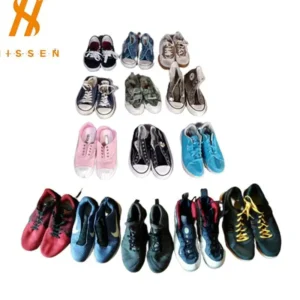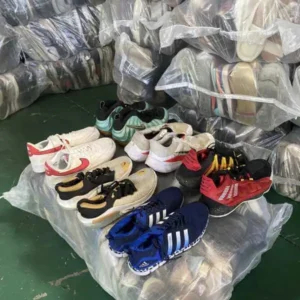Why is second-hand clothing popular across African countries?

With over 8 years of experience, we know that African countries are the largest market for second-hand clothes. We can easily check that when we type “used clothes” in the search engine, there’s always followed by the term of South Africa. So why does this phenomenon happen? We will discuss this question in the following article.
The reason of used clothes popular across African countries
Used clothing is also known as recycled clothing. Second-hand clothes are used clothes which have been collected from all over the world and bring a beneficial impact to the industry of developing countries, especially Africa. As this kind of clothes is cheap and affordable for people, it’s enough reason that many Africans buy second-hand clothing from other countries for wearing or selling again at low price. In addition, it can be found everywhere in African countries since second-hand shops often take up a large portion of the market.

While there are many reasons why African countries are the largest market for second-hand clothing. This is because African citizens have an important reason to buy clothes at a low cost. Africa is relatively poorer than other continents, so people have no enough money to buy new clothes lately. Also, the concept of recycling clothes has been deeply rooted in people’s minds.
Internal factors:
1. Economic Status
Geographically, Africa is the second largest continent in the world and the second-most populous, but what about its economic development? “Sub-Saharan Africa will be the world’s slowest growing region in 2021” (1).
On the whole, Africa is very poor and backward. In people’s impression, the first thought that comes to mind when mentioning Africa is poverty and backwardness. With the current economic trend, the gap between Africa and developed countries is still widening.
Lack of resources
In fact, Africa is rich with natural resources, including good crop yields and rich mineral resources. For this reason, Africans are happy to enjoy the life of the moment, lacking the sense of crisis for social development and no sense of saving, so they end up with nothing.Most African countries have an underdeveloped industrial base, so even they have a large number of resources, they do not have the ability to exploit them.

The natural conditions in Africa, on the one hand, nourish flora and fauna, and on the other hand, help the reproduction of viruses and germs. As a result, Africa bears 1/4 of the world’s disease burden, which eventually leads to poverty due to disease.
The effects of war
After World War II, most of the countries in Africa gained independence. Still, they were then plunged into one civil war and coup after another, thus leaving the people too struggling for basic lives and survival to care about nation-building.
In addition, Africa’s total fertility rate reached 4.7 between 2010 and 2015, equivalent to having 470 infants for every 100 women, which led to a population explosion in Africa. At the same time, less than 20% of the population in Africa is educated. It is well known that education is fundamental to the country; with a high fertility rate, rapid disease reproduction, and low education level, science and technology naturally lag, and industrial civilization can hardly rise, and economic development naturally lags behind.

A low quality of life
According to The World Bank 2020 statistics, GDP per capita is $5,090.72 in South Africa, $2,097.09 in Nigeria, $1,838.21 in Kenya, while $63,543.58 in the US(2). People are living under a low quality of life. People in Africa can hardly enjoy the education and medical services that developed countries have, and many African countries rank very low on the human development index. They are not affordable for the vast majority of the population; however, second-hand clothes can be easily afforded by most Africans, and this is why they are widely popular in Africa.
2. Perception Shift
In recent years, the attitude of consumers towards the purchase of apparel products has changed a lot. From frantic shopperism, they have changed to rational consumerism. More and more consumers are accepting second-hand goods and becoming more tolerant of their previous conservative attitudes. In the past, many people’s impressions of second-hand goods were in the “old,” “outdated,” “broken” stage, but the rise of second-hand trading over the years has changed most people’s views to some extent. The rise of second-hand trading over the years has changed the consumer purchasing habits and perception of most people to a certain extent.
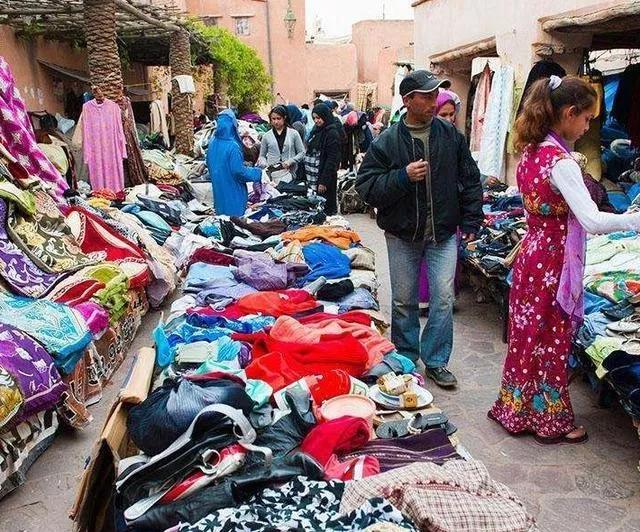
Vintage
Vintage has made a big wave in recent years. It has become popular with different age groups because it can satisfy consumer desires to use aesthetically pleasing design as well as mainstream fashion trends at low prices. Then, some people are still not affordable for these vintage clothes, which has contributed to the birth of the second-hand clothes industry. To tell the truth, many consumers, including Africans, are now willing to buy second-hand clothes instead of new clothes.

Actually, importing and selling used clothes are banned in some countries since they are anxious to maintain their local textile manufacturing industries. Including some African countries, they are trying to ban imports of used clothing, but exporting countries are pushing back, claiming that such bans violate international trade agreements. Thus the prohibition doesn’t carry out, and the used clothing industry keeps developing.
However
The rapid development of the second-hand clothing industry is an important factor in improving people’s lives. Second-hand clothes are very cost-effective for poor Africans who can afford them since they are on small salaries. The used clothes industry contributes significantly to local economies, so many African countries are now trying to participate in the business. The used clothing industry contributes greatly to local economies, so many African countries are now trying to take part in the business.
External factors:
3. Global fashion industry
Clothes are as essential to everyone’s life as food and water. With the development of the economy, people in developed countries living standards and their requirements for buying clothes are getting higher and higher, people’s concept of consumption and use of clothing is changing. And result in the average life span of each piece of clothing being greatly reduced.
China
Where to buy bulk clothing for resale in cape town
For example, since the reform and opening-up, China’s rapid economic development has led to a higher standard of living for the Chinese. With the development of the social economy, people’s income has been increasing substantially, people have more money, and their purchasing power for clothes has increased dramatically. As an essential item of daily life, the clothing industry is booming in the global market, with many different types of clothing available for people to choose from. At the same time, the overwhelming availability of beautiful clothes in various styles has greatly stimulated people’s desire to buy. Likewise, the speed of production and new product launch has greatly accelerated the rate at which people update their clothes.
click here to know more
Besides, various countries around the world are gradually converging, and various ideas and designs from foreign countries have been introduced into China, making young people more aware of the pursuit of fashion.The idea of loving beauty is widely spread in society, so people are more and more careful about dressing up.Many people are willing to spend money and effort on clothing; simultaneously, the concept of frugality is gradually forgotten.
Shopping Trends
There is no doubt that shopping sprees promote the business efficiency of enterprises, but it is debatable whether to buy that much is necessary. On the one hand, it is believed that economic growth benefits people worldwide, and one of such benefits is increased availability of goods and better quality goods for consumers. As a result, we see both more choices available to consumers and improvements in the quality of the products they buy. On the other hand, excessive consumption behavior wastes resources and energy and leads to a low-quality environment.

Fashion
Fashion is one of the most important focuses of consumption, awareness of fashion has become a new type of ideal for people to pursue. A person’s success or happiness is measured by material wealth and judged by how many clothes he owns and how stylish they are.People’s desire to pile up more clothes comes from their pursuit of beautiful colors, luxury brands, various styles, and the willingness to be unique. This results in an excessive number of clothing articles piling up in closets throughout the world after being used for a short period before being discarded. Additionally, many non-clothing items are now often combined with clothing in the shape of wearing accessories such as belts, watches, and bags, which further contribute to waste generation at home.

The one reason of African
Under such conditions, countries like the US, UK, French, and China through away millions of tons of textiles every year, which at least 80% can be recycled and used again.
Excess overconsumption in developed countries is one of the main reasons second-hand clothing is widespread across Africa, which offers large markets for used clothes. Adopting second-hand clothes will not only reduce material consumption but also meet current market demands. Consumers in African countries are willing to buy reasonably priced clothes as well as good quality.

Which means they are highly likely to buy second-hand clothes rather than new ones even if they’re paying a little more for each item.
4. Environmental issues
In the past 30 years, the Earth’s biological species have declined by 35 percent, and 30% of the world’s land has been degraded by human activity. Six hundred fifty million people worldwide do not have access to safe drinking water. Fashion is one of the most polluting industries in the world.
Take China as an example:
Each kilogram of chemical fiber, polyester, and other textiles can increase 3.6 kg of carbon dioxide emissions, consume 6000 liters of water, and use 0.3 kg of fertilizer and 0.2 kg of pesticides. At the same time, China produces up to 20 million tons of waste textiles each year. Textile waste has become one of the most severe materials of the consumer era social resources wasted. China has a large number of waste textiles thrown into the garbage every year. If recycle this waste, the volume of providing chemical and natural fibers every year, equivalent to saving crude oil 24 million tons and reducing the emission of 80 million tons of carbon dioxide.
However, we know that recycling and converting this textile waste for other uses is a massive project with high cost and effort in the process. Thus, reselling and reusing can be an important way for this sustainable textile waste management.

Textile reselling for reusing
Textile reselling for reusing is one of the most cost-effective, profitable, and “green” recycling options available today. It offers a myriad of opportunities in terms of revenue generation along with environmental benefits through reusing fiber instead of burning or burying it. When you recycle your old clothes, it can reduce the number of new fabrics that need to be created, which in turn reduces the amount of energy needed to create that fabric.


People can use this method to maintain the sustainable development of human life. It has excellent help for protecting our environment, keeps water and soil pollution under control, and leads us to develop a low-carbon green society.
Large demand in Africa
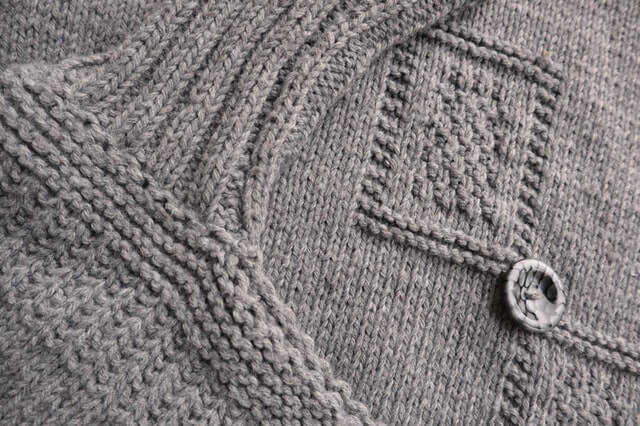
Humans have an intrinsic love for fashion and therefore keep searching for new styles and trends every day to satisfy their desires to look “cool”. However, this behavior has a major threat to our Earth, which is known as “fashion fatigue” or “fashion exhaustion,” a phrase utilized by the international environmental community to denote the consequence of having too many clothes.
In fact, it has been acknowledged that without sustainable fashion consumption behavior, our planet’s resources will be depleted soon. Besides, many African countries are experiencing an economic rise, which makes people crave clothes that are fashionable. This desire for the newest fashion trends has driven them to buy second-hand clothing from countries like UK, USA, and China due to its low prices and good quality. Meanwhile, some people even purchase plenty of “new” clothes, which will be used only for a short period of time.
Conclusion
Therefore, this article does not only provide an explanation for why second-hand clothing is popular in Africa but also attempts to persuade people to take action and make a difference to our Earth before it’s too late.
If you are thinking about where to buy bulk clothing for resale in cape town,pls contact us .
Learn more